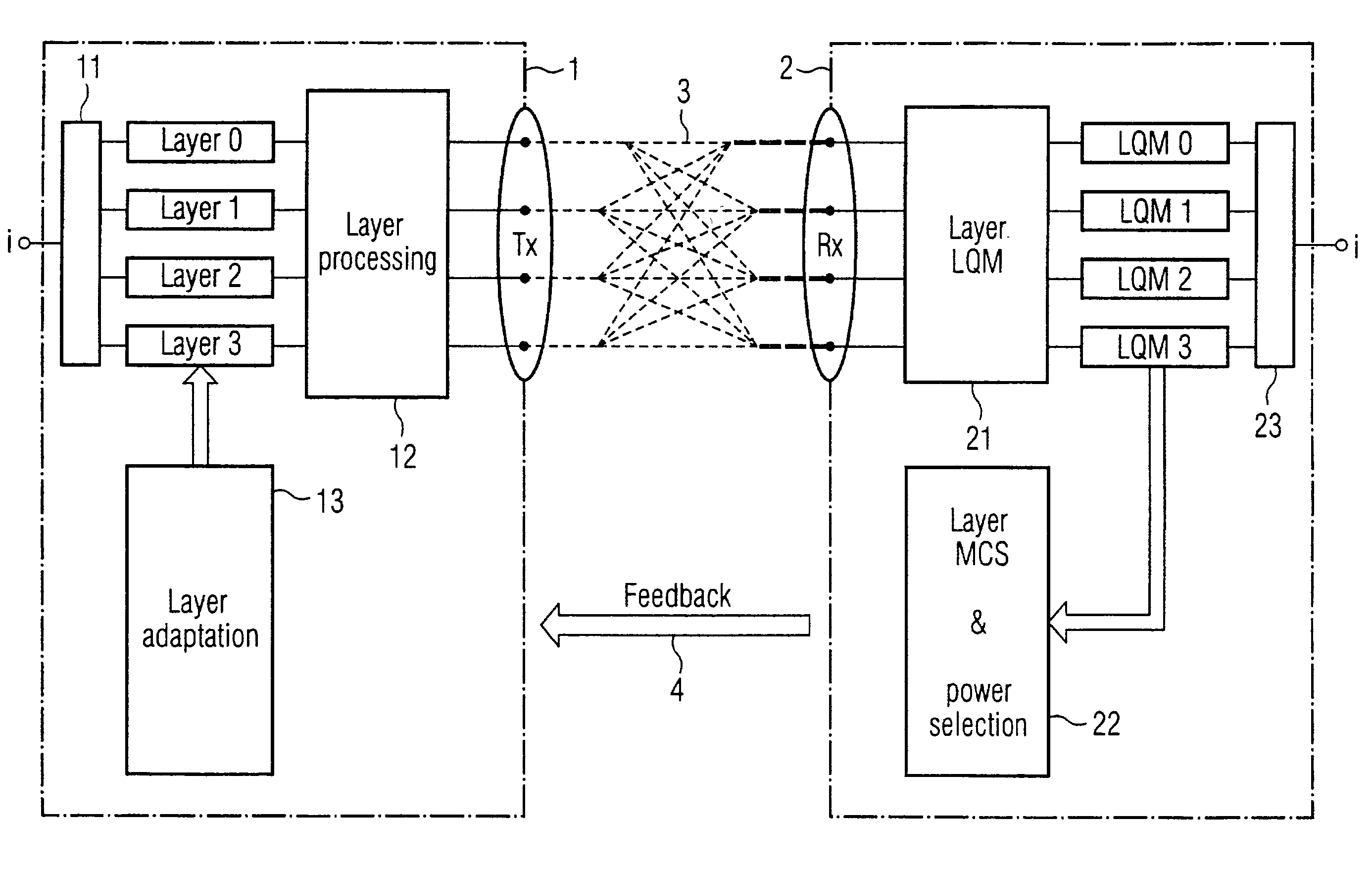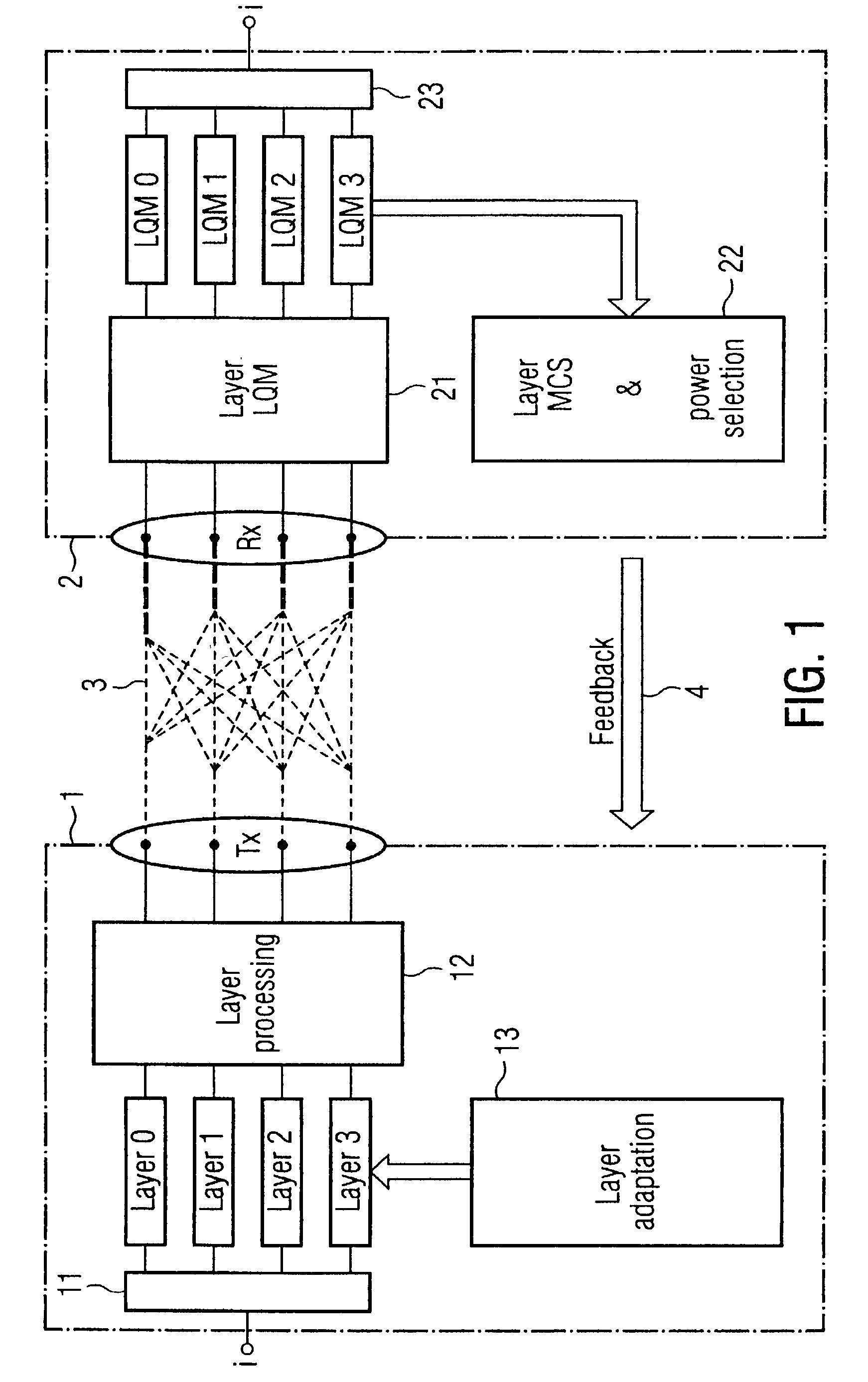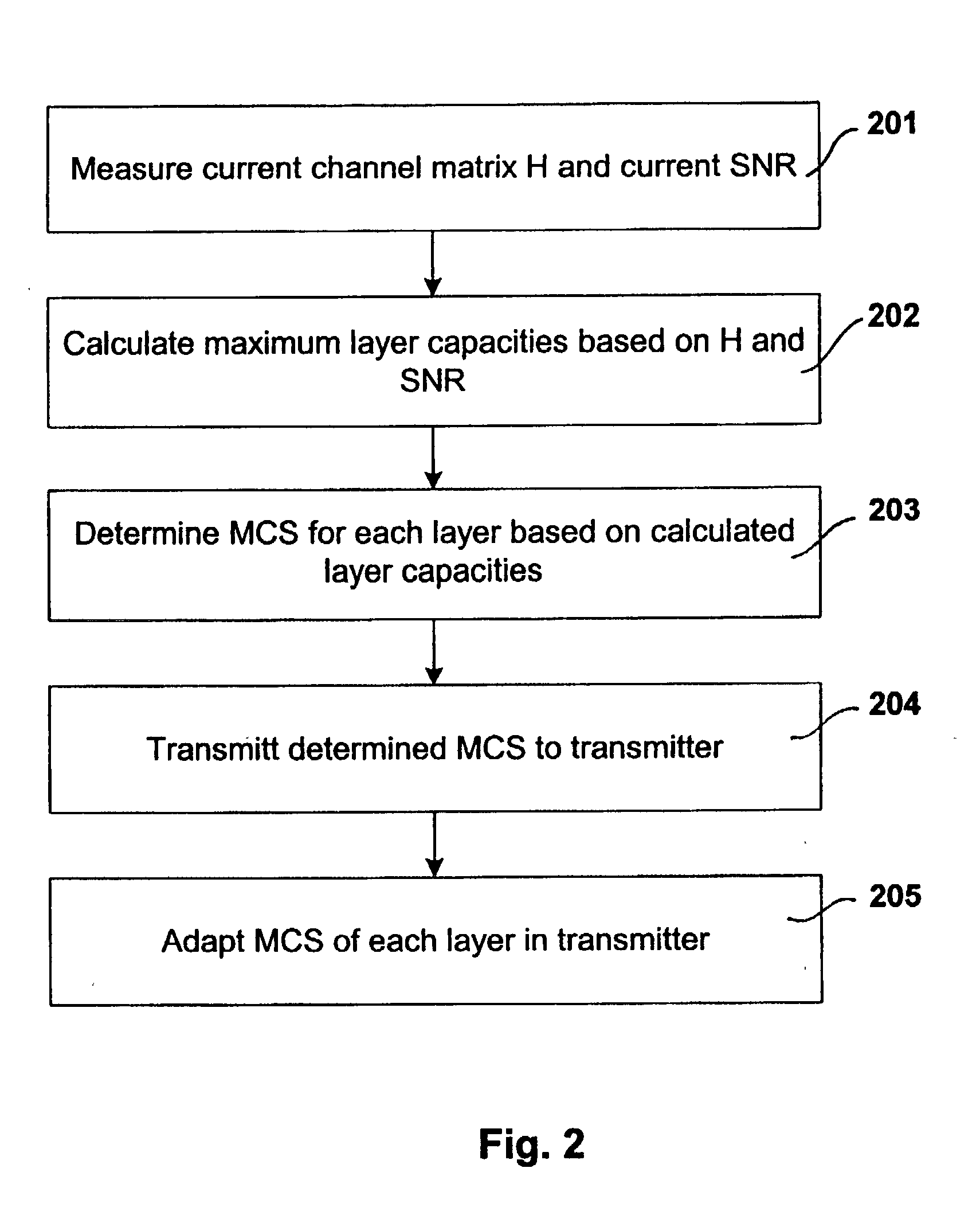Link adaptation for MIMO transmission schemes
a transmission scheme and link technology, applied in the field of link adaptation for mimo transmission schemes, can solve the problem that the transmission potential of the mimo channel might not be fully exploited in most cases, and achieve the effect of reducing the number of strata, substantial performance gain, and small potential rate of one or more strata
- Summary
- Abstract
- Description
- Claims
- Application Information
AI Technical Summary
Benefits of technology
Problems solved by technology
Method used
Image
Examples
Embodiment Construction
[0043] FIG. 1 shows a MIMO communication system with a transmitter 1 and a receiver 2. In this embodiment the transmitter 1 provides four transmit antennas and the receiver 2 also provides four receive antennas. Payload information i is split in the transmitter by a demultiplexer 11 into four subsignals which are also called Layer 0, Layer 1 Layer 2 and Layer 3. The demultiplexer can be controlled in a way that the data rate of each subsignal may be chosen different from the data rates of the other subsignals. The subsignals are processed by a layer processing unit 12 to achieve the desired MIMO properties. The subsignals are transmitted to the receiver 2 whereby they are subjected to a MIMO channel. In the receiver 2 the different layers are decoded and the link quality of each received subsignal (each layer) is determined by a layer link quality means 21. In this embodiment the link quality information is evaluated in the receiver in an evaluation unit 22 and control information i...
PUM
 Login to View More
Login to View More Abstract
Description
Claims
Application Information
 Login to View More
Login to View More - R&D
- Intellectual Property
- Life Sciences
- Materials
- Tech Scout
- Unparalleled Data Quality
- Higher Quality Content
- 60% Fewer Hallucinations
Browse by: Latest US Patents, China's latest patents, Technical Efficacy Thesaurus, Application Domain, Technology Topic, Popular Technical Reports.
© 2025 PatSnap. All rights reserved.Legal|Privacy policy|Modern Slavery Act Transparency Statement|Sitemap|About US| Contact US: help@patsnap.com



